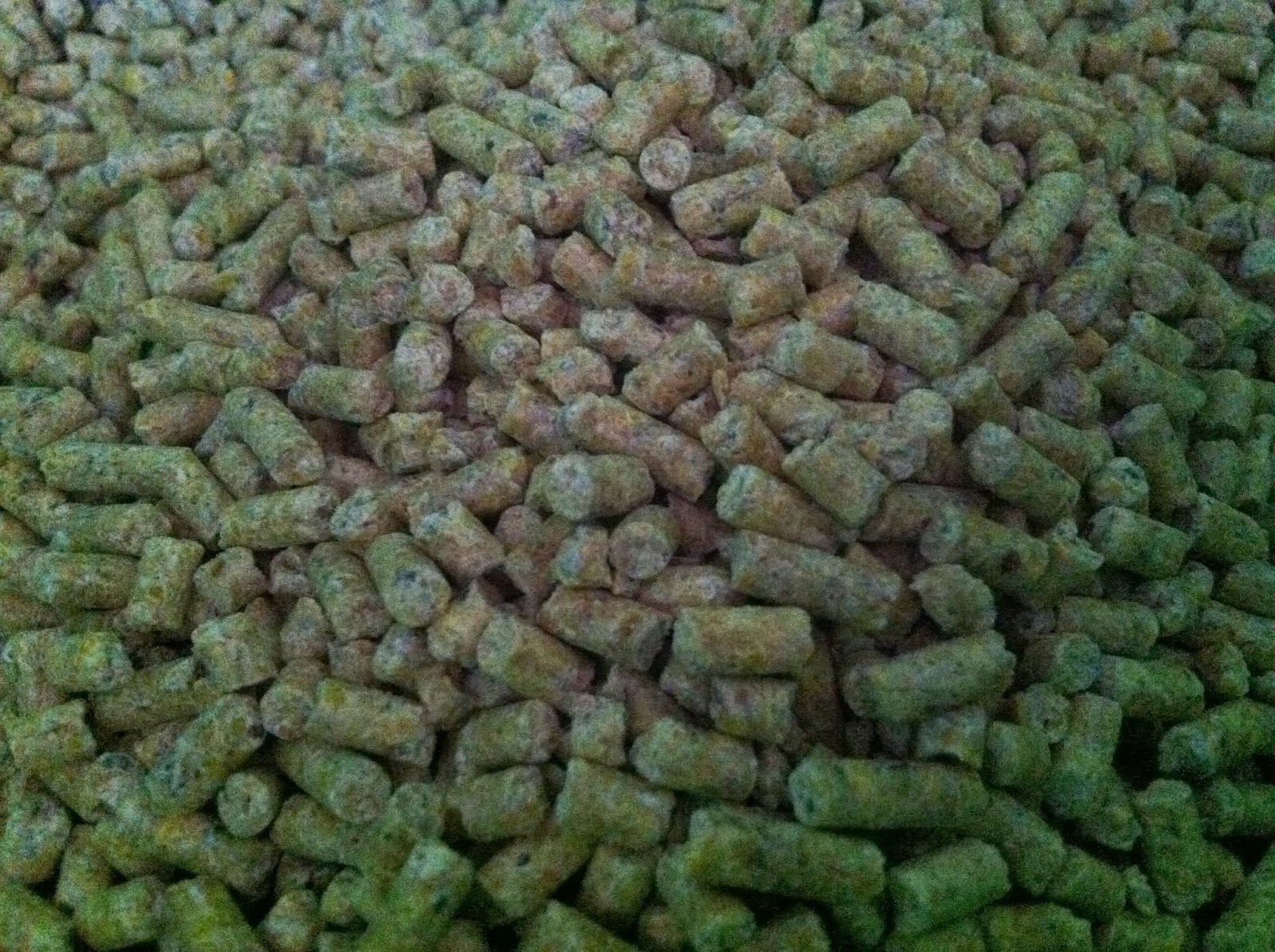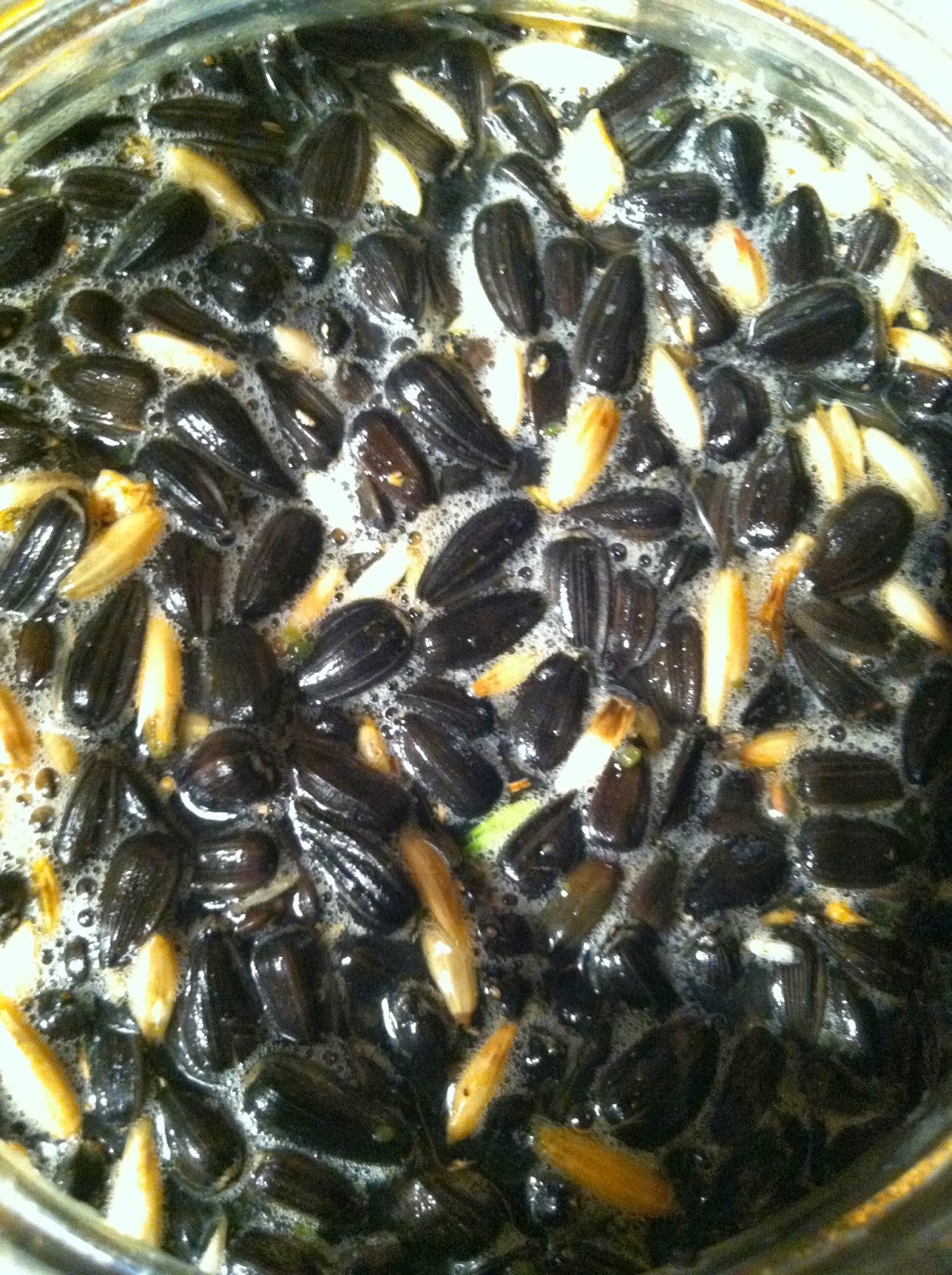 |
| Fermented wheat, barley, oats, sunflowers, and kelp. Served on a plate. |
So we've been gradually moving toward "healthier" since we started. For a while, we were getting the brand-name cheap stuff from Tractor Supply. It was a pale brown, underwhelming mystery feed comprised of mostly (we think) grain by-products. Yum.
Then, we started getting the "All Natural" stuff from the local farmer's co-op here in town. While certainly better, it lacks the....um....naturalness that you'd expect. "Hydrolized corn proteins" just don't scream "all natural" to me. But hey, at least it's better than "modified grain by-products," right?
So, that wasn't the answer either.
I mean, seriously, who would want to honestly feed their chickens THIS:
 |
| "All natural" local pelleted feed. Yeah..... |
 |
| Our first batch of fermented, home-made feed. Almost a pound! |
Our recipe is this:
3 parts whole wheat berries
3 parts whole barley
3 parts whole oats (NOT rolled, steel-cut, or pressed)
1 part black oil sunflower seeds
1/2 part dried kelp
Water as necessary
We ended up developing our own lil' measuring cup to get the right ratios quickly and easily.
A big glass jar
Note: these measurements are by weight, not by volume.
 |
| Dry mixed feed for the fermenting jug. You can see oats to the left, sunflower seeds on the bottom, and kelp to the top right. |
 |
| The green line is for kelp. :) |
 |
| Mixed grains ready for water. |
 |
| Right after adding water, the sunflower seeds float, and the kelp inflates. |
 |
| The |
We're moving toward making half of the chickens' feed be these fermented grains. That's a lot of feed, and will save tons of money, even over the assembly-line feeds. We made a significant investment and bought over 500 pounds of feed last weekend.
 |
| 31-gallon cans of wheat (back), barley (middle), and oats (front). The lidded one on the bottom has the sunflower seed and kelp. You can see my drums and my grill in the background. :) |
I have to keep 3 bricks on top of each of the trash can lids because I apparently have nuclear-powered mice that chew through plastic and climb up wire and eat ANYTHING. The last thing I want to ferment is mice poop. Ew.
So, the million-dollar question: do the chickens eat it?
 |
| The hens going NUTS for the fermented feed. They cleared out the first pound in about 5 minutes. |
I even gave some to the baby chicks, who loved it.
 |
| It's hard to get them to stay still..... |
So, thus far, the fermented grains have been a success. Granted, we started about 5 days ago and have only fed like 3 times. BUT, the chicks love it, it looks like real food, I know exactly what's in there, and it contains tons of good stuff. So we'll keep doing it.
We are developing a two-jar system so we replace what we take to continue the fermentation indefinitely. Stay tuned for more on that.
No comments:
Post a Comment